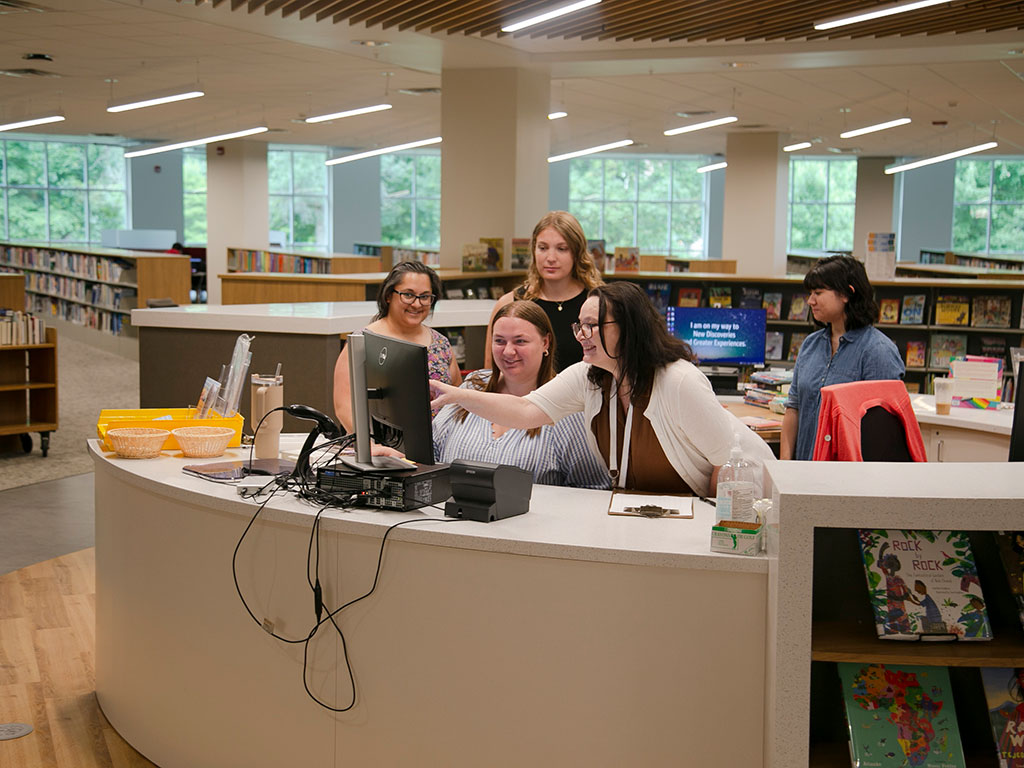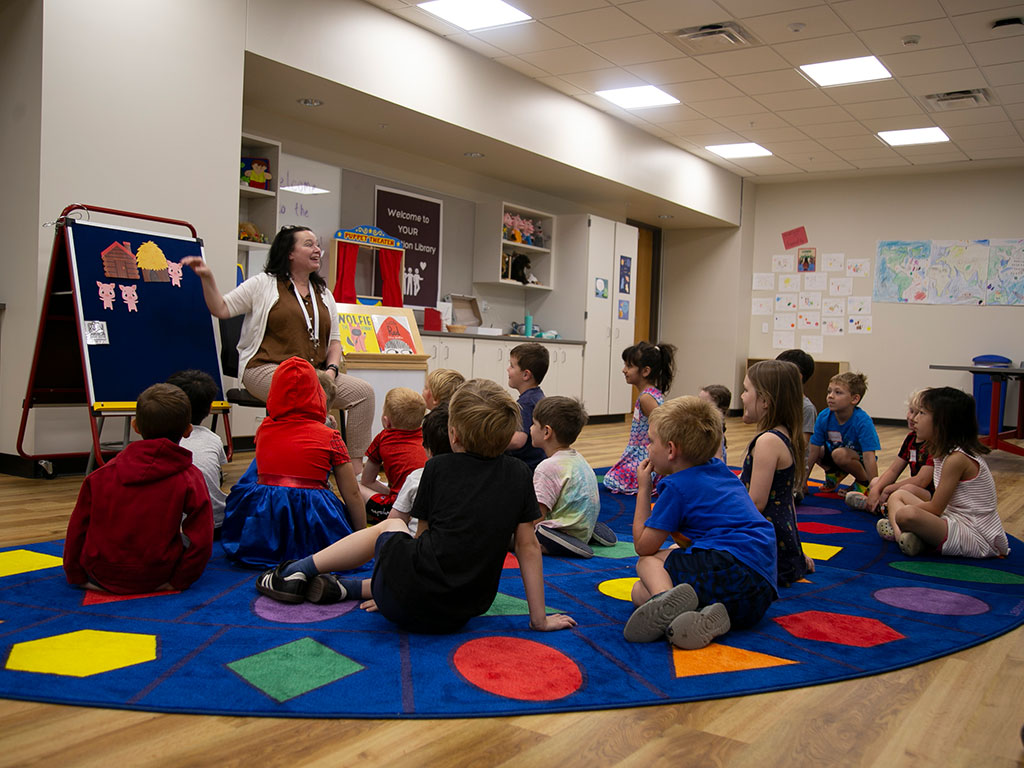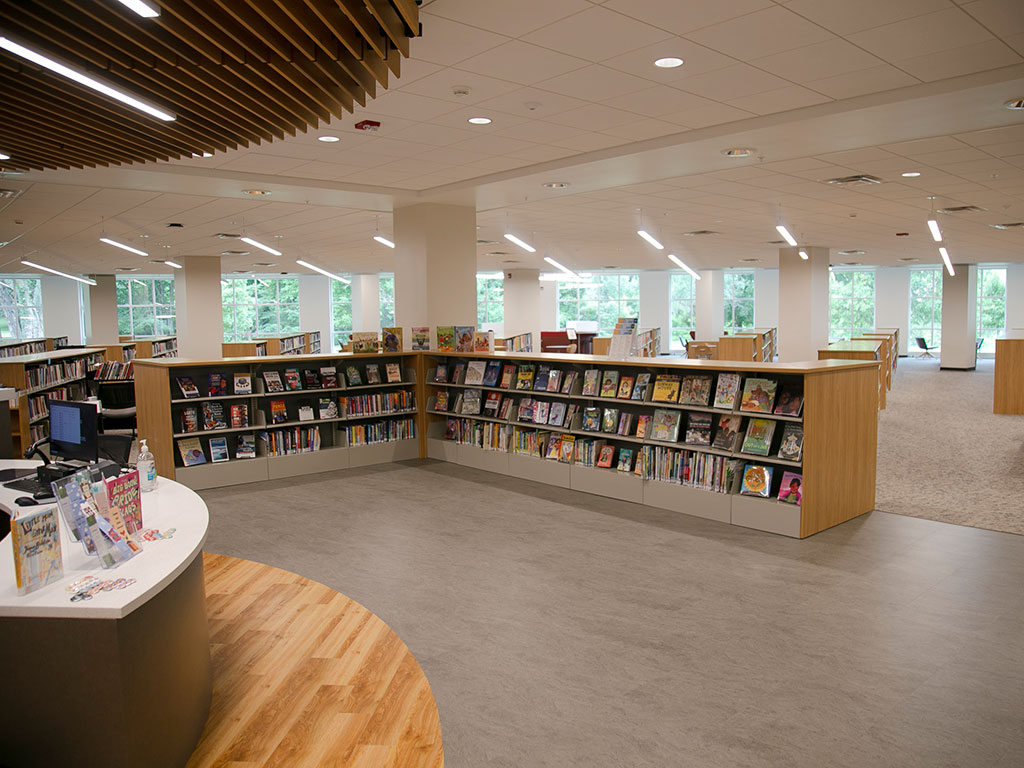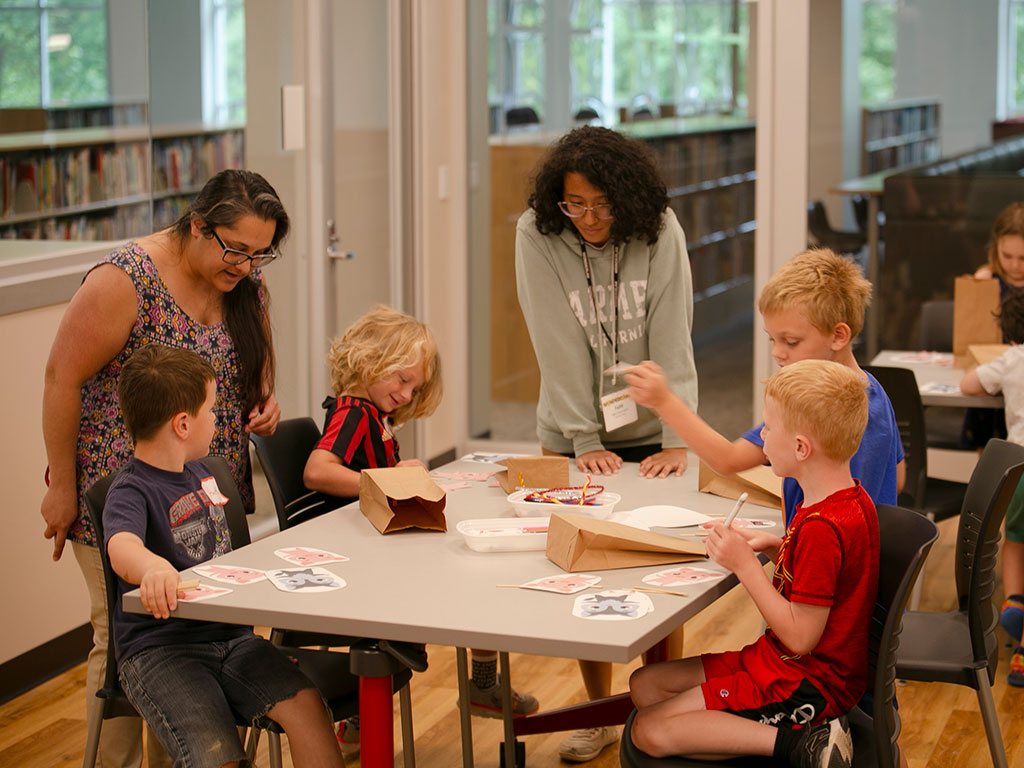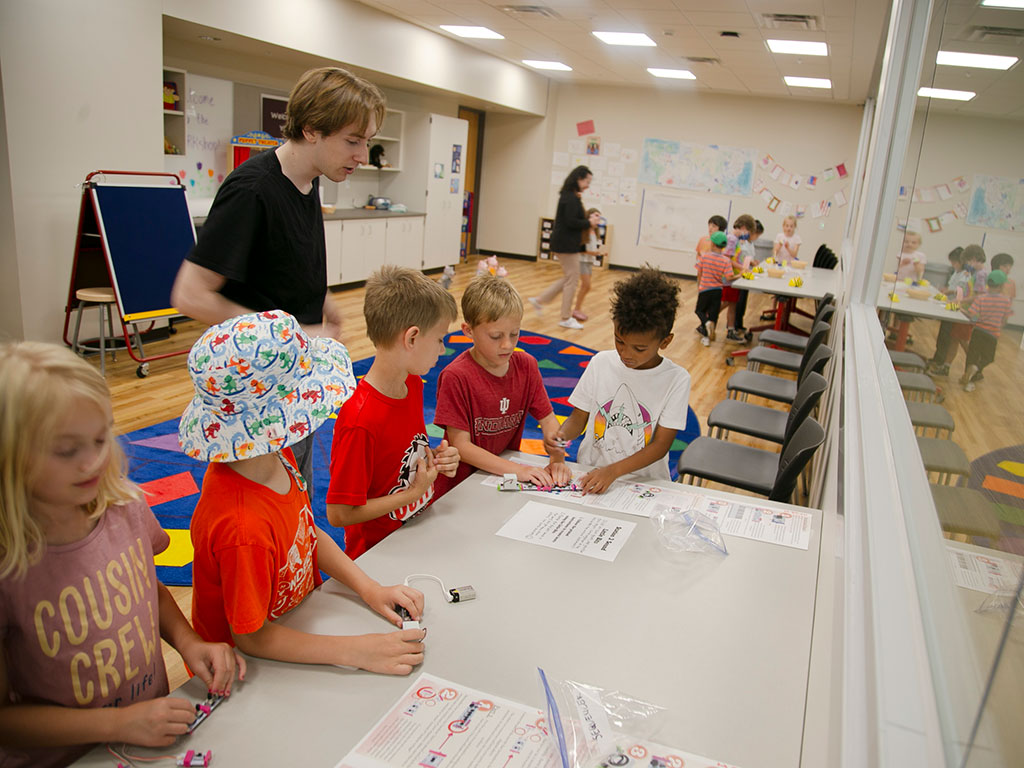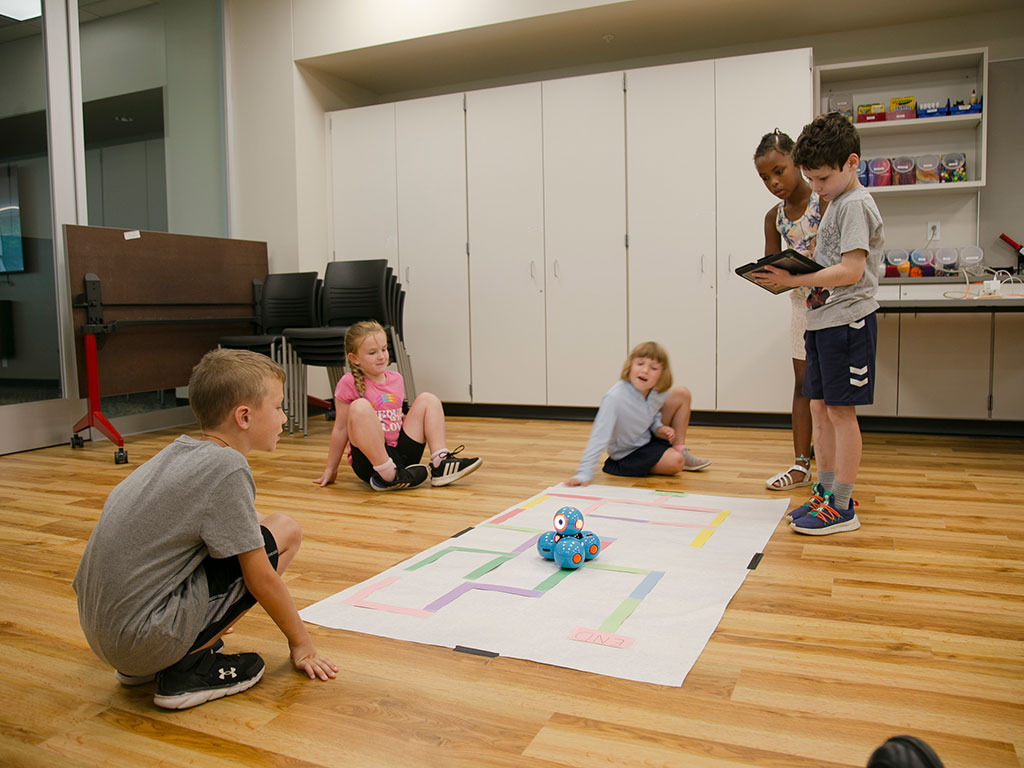With the previously-used taller bookshelves replaced, the Education Library is now an open, airy space. It also includes new rooms and features that were much needed by modern scholars, such as a simulated classroom called the WORKshop, to allow teaching faculty a space for students to practice classroom techniques before trying them out in their field placements. In addition to the need for an experiential learning space for pre-service teachers, there was no place in the library conducive to panel and book discussions.
“Before the renovation, I would rearrange furniture and prop a projector on a book cart in order to facilitate hybrid events featuring SOE and other campus scholars and visitors,” Jones explained. “Now we have warm, welcoming, and intentional spaces in which our SOE community may practice, create, and connect in the Education Library.”
UITS Learning Spaces and Capital Planning have been instrumental in the physical improvements, but much more was required. During the renovation, IU Libraries accelerated digitization of research materials, and preserved additional print dissertations in the offsite Ruth Lilly Auxiliary Library Facility, giving the library more space to be used for collaboration and deep focus. These materials remain quickly accessible through request delivery services and online viewing. The children’s literature collection, which is almost entirely print-based, now has room to grow to meet the needs of literacy and content-area learning for P-12 pre-service teachers and teacher educators.
These changes are all reflective of the focus Jones and the rest of the task force kept during the process, with one group in particular in mind.
“It was so important that we keep our users at the center of our design. The School of Education has a diverse community of students and scholars – from artists to historians, technologists to psychologists, and all those shaping the future of our classrooms and schools. Therefore, it was important to keep the space flexible and responsive to innovations occurring throughout our community,” she said. “It was also important to provide a place for deep thought and contemplation, which is critical for scholarly creativity. Our large expanse of windows overlooking green spaces invites just such an environment in the main part of the library.”
In addition to multiple quiet study spots around the library, there are five new study rooms that are reservable on the Education Library website.
“Besides using our books for research and classroom purposes, I hope that students will allow space in their schedule to reconnect with children’s literature. There has been a renaissance in this area of publishing with the inclusion of diverse voices and experiences. I often hear students exclaim, ‘I wish they would have had this book when I was growing up!’” Jones added.
The work of completely reorganizing and renovating a large library is a huge undertaking, and though the library is now open, the team is still working through the details of library operations and space policies. They are also converting the circulation system to incorporate radio-frequency identification (RFID) technology. The team will have more help with that work with the addition of Micaela Deogracias, who was recently hired as the Outreach & Engagement Librarian.
As the project comes to a completion, Jones hopes visitors will continue to value the contemplative environment of the library as an oasis from the hustle and bustle of campus life.
“My hopes and dreams are that the SOE community views the Education Library as a connective space in which to share and contribute ideas within our school and among campus and community partners. My hope is that our future educators, counselors, and school leaders recognize that their work is valued by the university in the form of a beautiful library designed just for them,” she said.


